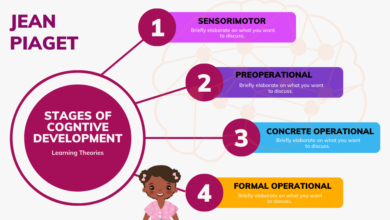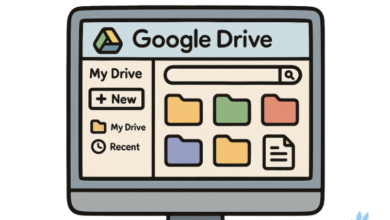Ethical Considerations In AI-Driven Learning


Aiming For Fair And Transparent AI-Driven Learning
As Artificial Intelligence (AI) is used more and more in education and corporate training, it brings not only opportunities but also risks. On one hand, platforms can adapt content based on learner performance, recommend what to learn next, and even assess answers within seconds, all thanks to AI. On the other hand, AI-driven learning isn’t always fair. Why? AI learns from data that can be biased, incomplete, or unrepresentative. And if you don’t spot biases and correct them, it can lead to unfair treatment, unequal opportunities, and a lack of transparency for learners.
It’s unfortunate that the same systems that personalize learning and benefit learners across the board can also unintentionally exclude them. So, how do we leverage AI while making sure it’s fair, transparent, and respectful of every learner? Finding this balance is called “ethical AI use.” Below, we will dive into the ethical side of AI-driven learning, help you identify bias, explore how to keep algorithms transparent and trustworthy, and show you the challenges and the solutions of using AI responsibly in education and training.
Bias In AI-Driven Learning
When we talk about fairness in AI, especially in AI-driven learning systems, bias is one of the biggest concerns. But what exactly is it? Bias happens when an algorithm makes unfair decisions or treats certain groups differently, often because of the data it was trained on. If the data shows inequalities or isn’t diverse enough, AI will reflect that.
For example, if an AI training platform were trained on data mainly from white, English speakers, it might not support learners from different languages or cultural backgrounds. This might result in unrelated content suggestions, unfair judgment, or even excluding people from opportunities. This is extremely serious because bias can breed harmful stereotypes, create unequal learning experiences, and make learners lose their trust. Unfortunately, the ones at risk are often minorities, people with disabilities, learners from low-income areas, or those with diverse learning preferences.
How To Mitigate Bias In AI-Driven Learning
Inclusive Systems
The first step in building a fairer AI system is designing it with inclusion in mind. As we pointed out, AI reflects whatever it’s trained on. You can’t expect it to understand different accents if it’s only trained on data from UK-English speakers. That can also lead to unfair assessments. Therefore, developers need to ensure datasets include people from different backgrounds, ethnicities, genders, age groups, regions, and learning preferences so the AI system can accommodate everyone.
Impact Assessments And Audits
Even if you build the most inclusive AI system, you’re not entirely sure it will work perfectly forever. AI systems need regular care, so you must conduct audits and impact assessments. An audit will help you spot biases in the algorithm early on and allow you to fix them before they become a more serious problem. Impact assessments take this one step further and review both short-term and long-term effects that biases may have on different learners, particularly those in minority groups.
Human Review
AI doesn’t know everything, and it can’t replace humans. It is smart, but it doesn’t have empathy and can’t understand general, cultural, or emotional context. That’s why teachers, instructors, and training experts must be involved in reviewing the content it generates and offering human insight, such as understanding emotions.
Ethical AI Frameworks
Several organizations have issued frameworks and guidelines that can help us use AI ethically. First, UNESCO [1] promotes human-centered AI that respects diversity, inclusion, and human rights. Their framework encourages transparency, open access, and strong data governance, especially in education. Then, the OECD’s principles in AI [2] state that it should be fair, transparent, accountable, and beneficial to humanity. Lastly, the EU is working on an AI regulation [3] on educational AI systems and plans to monitor them strictly. That includes requirements for transparency, data use, and human review.
Transparency In AI
Transparency means being open about how AI systems work. Specifically, what data they use, how they make decisions, and why they recommend things. When learners understand how these systems work, they’re more likely to trust the results. After all, people want to know why they got these responses, no matter why they’re using an AI tool. That’s called explainability.
However, many AI models aren’t always easy to explain. This is called the “black box” problem. Even developers sometimes struggle to get exactly why an algorithm reached a certain conclusion. And that’s a problem when we’re using AI to make decisions that affect people’s progress or career development. Learners deserve to know how their data is used and what role AI plays in shaping their learning experience before they consent to use it. Without that, it will be harder for them to trust any AI-driven learning system.
Strategies To Increase Transparency In AI-Driven Learning
Explainable AI Models
Explainable AI (or XAI) is all about designing AI systems that can clearly explain the reason behind their decisions. For example, when an explainable AI-driven LMS grades a quiz, instead of saying, “You scored 70%,” it might say, “You missed the questions about this specific module.” Giving context benefits not only learners but educators as well, as they can spot patterns. If an AI consistently recommends certain materials or informs educators about certain students, teachers can check whether the system is acting fairly. The goal of XAI is to make AI’s logic understandable enough so that people can make informed decisions, ask questions, or even challenge the results when needed.
Clear Communication
One of the most practical ways to boost transparency is simply to communicate clearly with learners. If AI recommends content, grades an assignment, or sends a notification, learners should be told why. This could be recommending resources about a topic they scored low on or suggesting courses based on their peers’ similar progress. Clear messages build trust and help learners have more control over their knowledge and skills.
Involving Stakeholders
Stakeholders, such as educators, administrators, and learning designers, need to understand how AI is operating, too. When everyone involved knows what the system does, what data it uses, and what its limits are, it becomes easier to spot issues, improve performance, and ensure fairness. For instance, if an administrator sees that certain learners are consistently offered extra support, they can explore whether the algorithm is right or if it needs adjusting.
How To Practice Ethical AI-Driven Learning
Ethical Checklist For AI Systems
When it comes to using AI-driven learning, it’s not enough to just get a strong platform. You need to make certain it’s being used ethically and responsibly. So, it’s nice to have an ethical AI checklist for when you’re choosing software. Every AI-powered learning system should be built and evaluated based on four key principles: fairness, accountability, transparency, and user control. Fairness means making sure the system doesn’t favor one group of learners over another; accountability is about someone being responsible for mistakes AI may make; transparency ensures learners know how decisions are being made; and user control allows learners to challenge the results or opt out of certain features.
Monitoring
Once you adopt an AI-driven learning system, it needs ongoing evaluation to ensure it’s still working well. AI tools should evolve based on real-time feedback, performance analytics, and regular audits. This is because the algorithm may rely on certain data and start unintentionally disadvantaging a group of learners. In that case, only monitoring will help you spot these issues early and fix them before they cause harm.
Training Developers And Educators
Every algorithm is shaped by people making choices, which is why it’s important for developers and educators working with AI-driven learning to get training. For developers, that means really understanding how things like training data, model design, and optimization can lead to bias. They also need to know how to create clear and inclusive systems. On the other hand, educators and learning designers need to know when they can trust AI tools and when they should question them.
Conclusion
Fairness and transparency in AI-driven learning are essential. Developers, educators, and other stakeholders must prioritize shaping AI to support learners. People behind those systems must start making ethical choices every step of the way so that everyone gets a fair chance to learn, grow, and thrive.
References:
[1] Ethics of Artificial Intelligence
[2] AI principles




